Case
Care Data Connect is an integrative care platform developed in collaboration with about thirty sensor manufacturers so that data from all of their sensors can be displayed on a single screen.The collected data can also be exported to other systems, which has allowed Future Care Lab in Japan to offer a brand-new data utilization model.
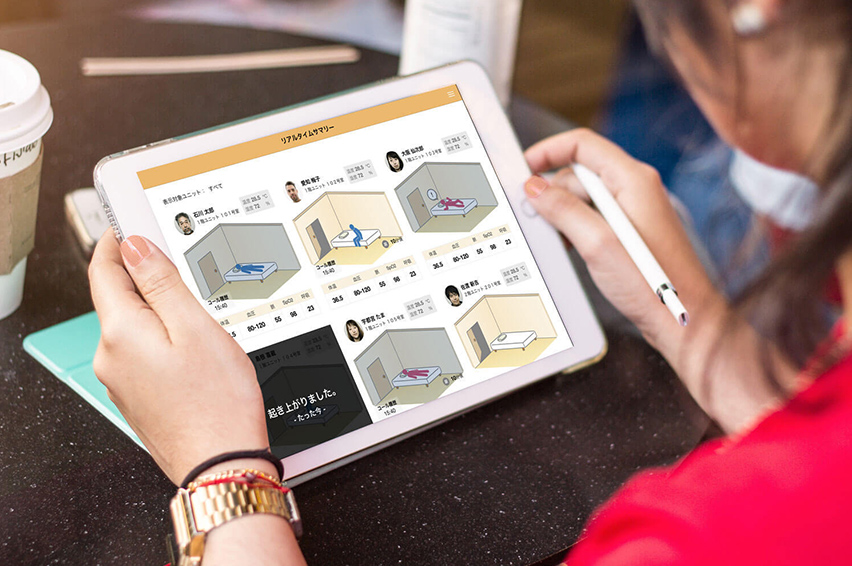
Joint Development
Care Data Connect for Future Care Lab in Japan
The Care Data Connect joint project emerged from a desire to ultimately eliminate data entry work at nursing care sites through automatic registration operations. Repeated improvements were made by overcoming numerous challenges through on-site testing, driven by a common mission to brighten the future of nursing care. This shared passion resulted in a system capable of truly supporting nursing care sites.
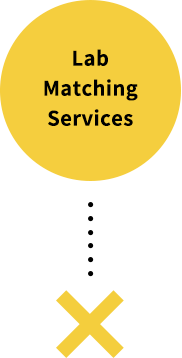
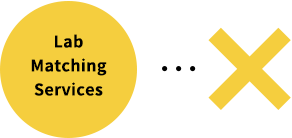
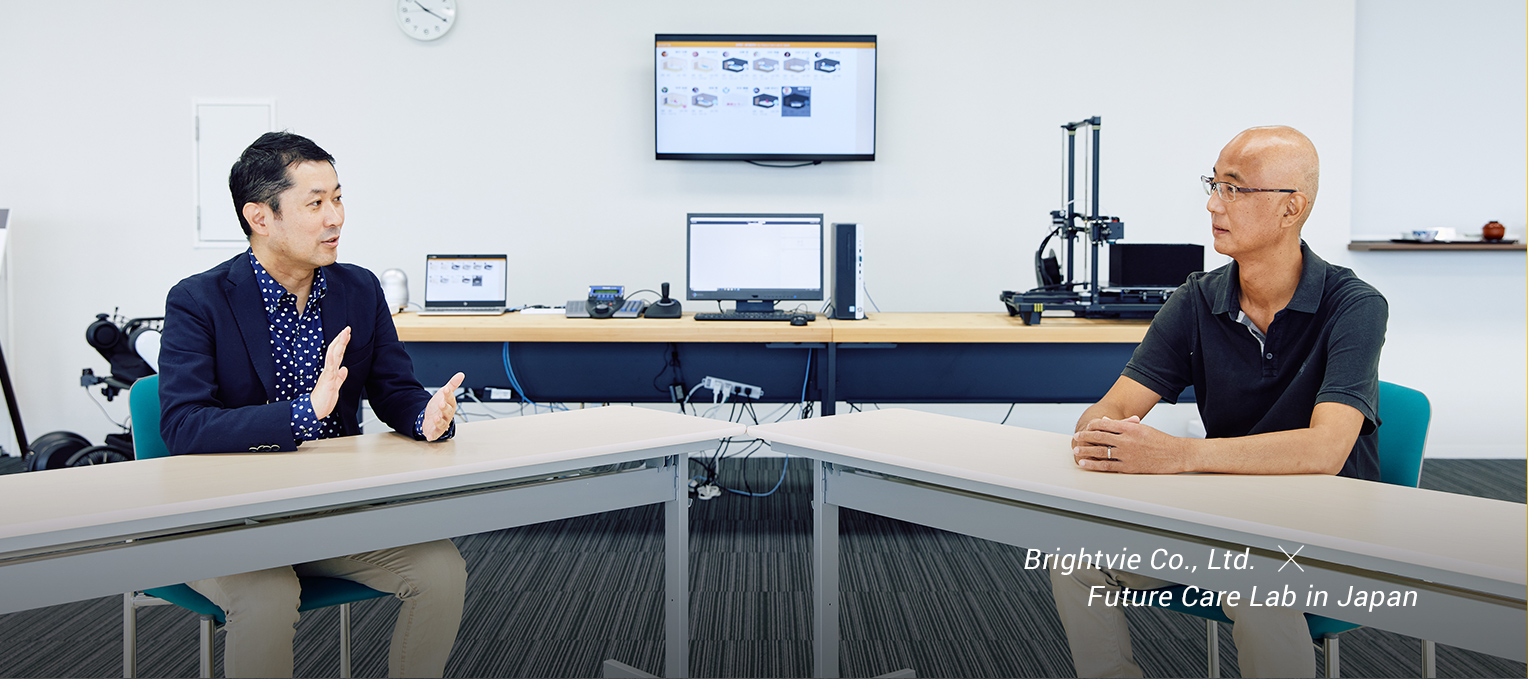
Interview
Joint Development Story
Interview
Participants
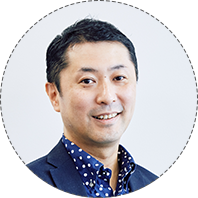
(From the development company)
Brightvie Co., Ltd.
Tomokazu Iida
CEO
Iida worked for Fujitsu Limited for nine years after graduating university. He then became an independent freelance engineer, and took an interest in nursing care after building a data system for a care facility. He established Brightvie Co., Ltd. in 2014, and the company is dedicated to improving nursing care sites through the use of information and communication technologies (ICT).
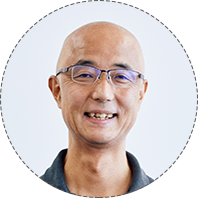
(From Future Care Lab in Japan)
Future Care Lab in Japan
Kenji Takahashi
Chief Engineer
Kenji Takahashi joined Sompo Japan after graduating university, and since then has been primarily involved in IT work across multiple departments, including the Information Systems Department, IT Planning Department, and Overseas Business Department.
Tell us how you ended up developing Care Data Connect.
Iida: My first job after I had gone out on my own as a freelance systems engineer was putting together a system for an intensive elder care facility. While working on that project, I spoke with caregivers and got to experience caregiving sites firsthand—including during the night shift. I also participated in training for caregivers, which made me feel like I was really a part of it. I realized how important nursing care is and how caregivers approach their work. The desire to use ICT to improve working conditions at nursing care sites continued to grow in me after that, and in 2014, I decided to start my own company. That same year I met Aki Ito, a nursing care consultant at Nekonote, at a nursing care training session. When I reached out to her, she wondered whether we could find a way to automatically record the vital signs taken in nursing settings. It was that idea that led me to come up with a plan proposal for Care Data Connect. Nobody had even considered the idea of linking measurement devices before then, so I had to go around to multiple manufacturers and ask them to help us streamline nursing care site operations. Eventually we were able to come up with a commercially viable product.
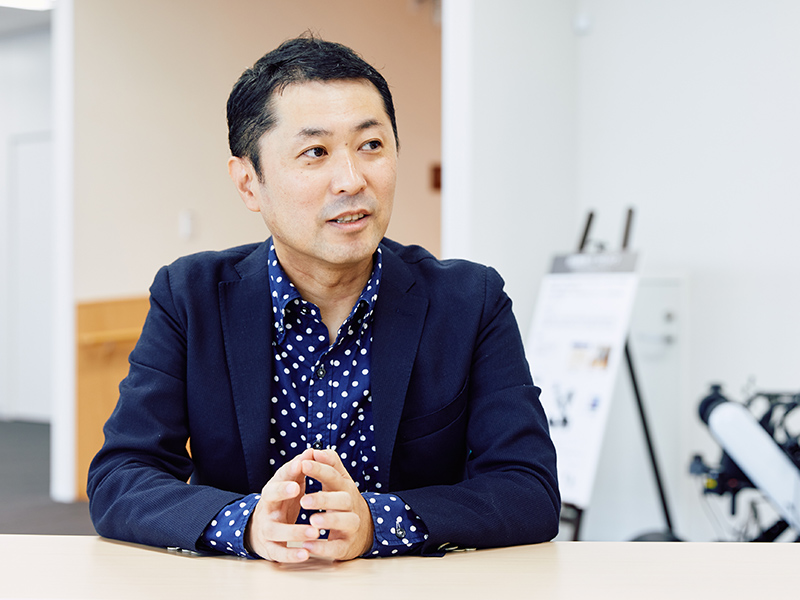
Tell us how the Lab decided to get involved in the Care Data Connect project.
Takahashi: The Future Care Lab in Japan (“the Lab”) has looked into a variety of sensors and similar technologies, but introducing multiple devices at care sites means that caregivers have to check a different screen on each one and operate them separately—making the system cumbersome to use overall. We knew that we needed a proposal for a more ideal system concept for nursing care facilities over the longer term in order to overcome these frontline issues, which led us to Brightvie during an internet search we were doing as part of our research work. We immediately reached out to Iida, who came out to the Lab. That’s how we started looking into his system.
Iida: I was amazed when I got the email from Mr. Takahashi. “What in the world is this?” I thought. I called him immediately, and went out to the Lab the next day. I still remember how much fun we had during our first meeting. What the Lab wanted to do was the same as the future vision I had—so regardless of whether we ended up as business partners, I simply enjoyed talking to them and couldn’t wait to see and talk to them again. The product we had at the time wasn’t yet up to snuff in terms of what the Lab wanted, but I was delighted to hear Mr. Takahashi describe exactly the product I had been making and that I wanted to make. What struck me the most was the thought that our product would just keep getting better—if what we could make on our own was 100, I figured that by incorporating the Lab’s ideas we could make it 110, then 120—and on and on. The possibilities just kept expanding.
Takahashi: I felt the same way. Because we were on the same page with everything—from the problems we needed to solve at nursing care sites to the way the system should look, I remember our conversation flowing effortlessly. When I found them online, I just got this intuitive sense from looking at their corporate philosophy and design approach that our ideas would be a good fit.
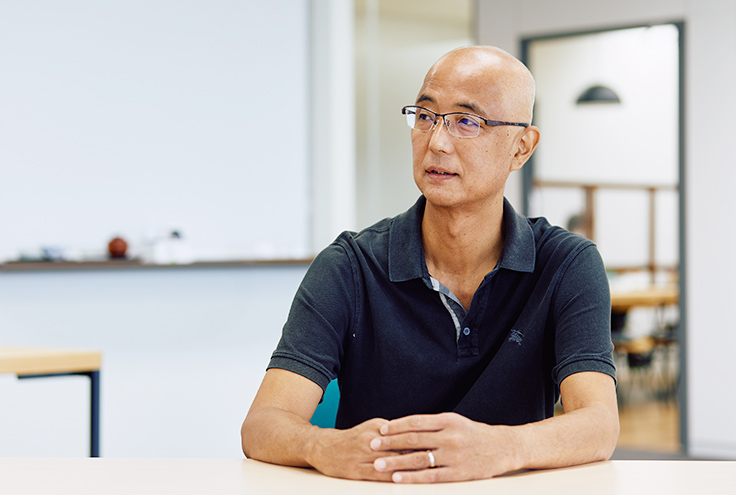
What was the specific process that the project used to move forward? Did you encounter any difficulties along the way?
Takahashi: Our goal was ultimately to use automated recordkeeping to eliminate data entry tasks entirely at nursing care sites, but there were a lot of problems with that and way too many things we wanted to do. So we came up with a sequence of steps that would get us there. Once the system was developed, we tested it at a nursing care facility. Mr. Iida and his team expertly handled the development itself, so the Lab didn’t run into any difficulties there. The hardest part was the on-site testing itself. We started running into all kinds of problems and needs once we actually put the tablets and sensors in the individual rooms at the senior care facility and started operating them, so we shared those with the developers and started looking into solutions that would inform the next step. It wasn’t easy, but I think it was the most important part of the project.
Iida: As you’d expect, the pandemic really hit us hard during the on-site testing phase. Normally we would have gone to the facility to help out, but only Lab staff were allowed to go into the individual rooms as a way to prevent the spread of the virus. There’s no doubt this made the installation work extremely difficult for Mr. Takahashi and his team. And while we were eager to work out the kinks on the software side, we had difficulty resolving the hardware issues we came up against. For example, we wanted to put a fall sensor in the system, but we couldn’t make one ourselves or find a good one overseas. The Lab did some exhaustive research, and ended up coming up with a list of outstanding sensors made in Japan and abroad so we could quickly pick out the best one. We were also able to connect products that had cleared Lab tests to Care Data Connect. This process had a huge impact on our being able to improve the quality of our product, so we’re tremendously grateful to the Lab for their support.
Takahashi: It’s true that the Lab specializes in finding the right products for the right applications. If we’ve got a need or a problem, we research globally for a way to solve it, and then subject whatever we pick to our own tests and evaluations. I think that’s a key role we play in this process.
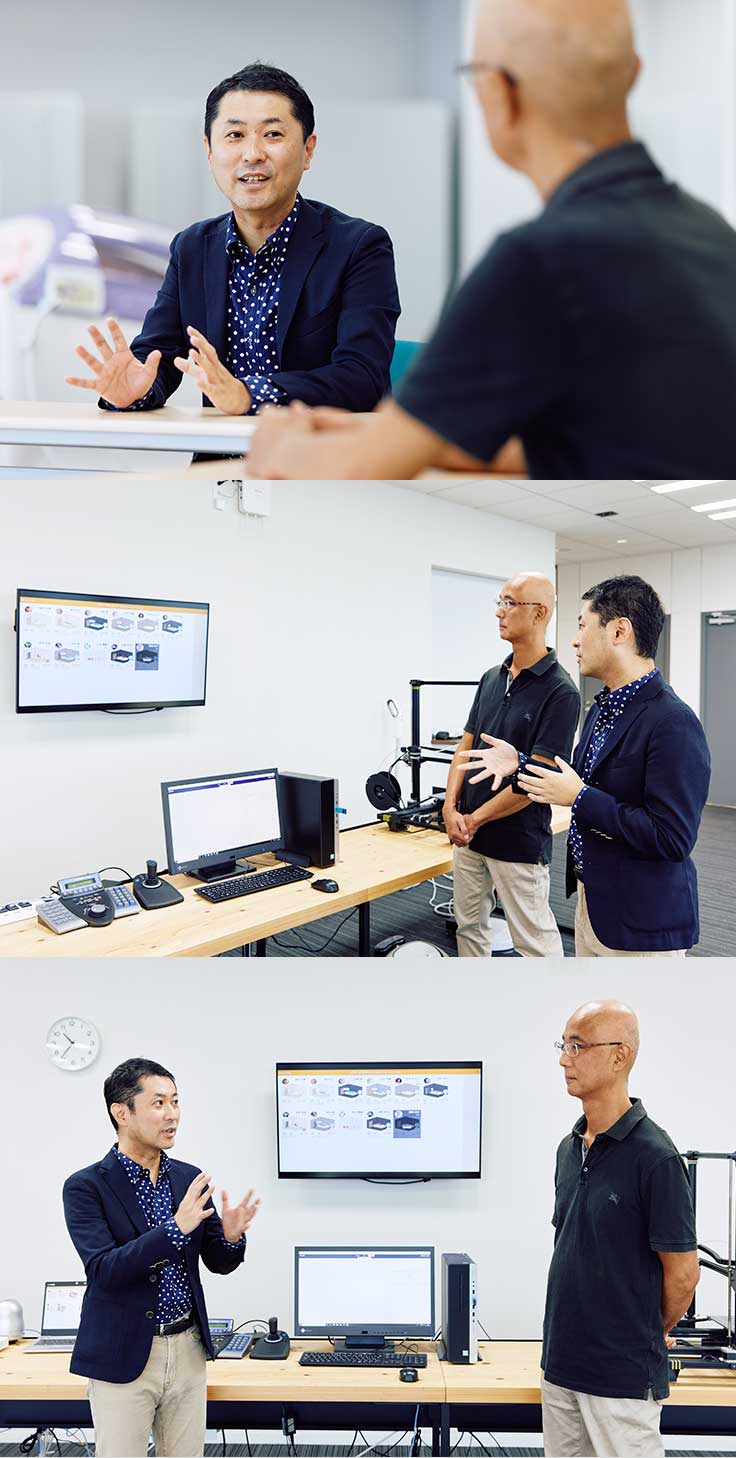
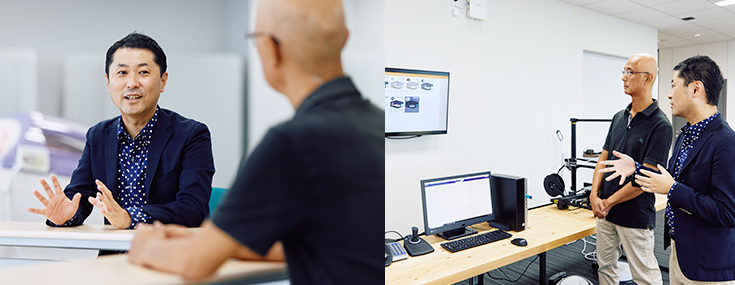
What did you discover or learn during the joint project?
Iida: The Lab thinks of things we could never achieve, figures out what the front lines need, and actively works to collect information that a development company like us could never get no matter how hard we tried. And because they are always guided by their mission to create better nursing care in Japan five or ten years down the road—never just for the sake of Sompo Care—I realize again just how narrow my view is every time I talk to them. On one hand I walk away a bit deflated almost every time I meet with them, but it’s an incredible motivator—all I ever want to do is help achieve our shared mission.
Takahashi: Ultimately, technology is no more than a tool—but it’s easy to get turned around and make it a goal in itself. Mr. Iida is the kind of person who will always return to the question of how we can make nursing care facilities easier places to work, how we can make nursing care better, and what we need to reach our ideals in the field. His attitude in turn helps us remember what our true purpose is for doing this work. The project also reminded me that bringing joy to frontline staff is what really makes this job worthwhile. This was the first time we had put a data system in a facility, and one of the user’s rooms had the toilet icon on all the time. Since it was our first time doing this, we assumed it was a system error, but when we checked it out we found that the person fallen in the bathroom. It proved that the Care Data Connect could help caregivers with unplanned things—and the facility staff thanked us for our support.
Iida: That was a bit of a shock. It was the first day after installing the system, so we thought we had overlooked something in the settings. When I heard that someone had actually fallen and that there wasn’t anything wrong with the accuracy of the system, I breathed a sigh of relief. Looking back, I realize how important it is to accumulate those times of real-world experiences.
Where are the product and project now, and what are your hopes for them in the future?
Iida: There are now about three hundred companies nationwide that have installed Care Data Connect series products. We are also in the process of doing on-site testing of Care Data Connect for FCL in Lab rooms and at Sompo Care La Ville Kawasaki. Our first goal is to make sure we overcome any issues we encounter in the Lab, and then have people in the facility use the product. Sompo Care isn’t the only workplace encountering these kinds of problems, so we’re hoping to create products that are a good fit for addressing them and then popularize them throughout Japan. We want to go deeply into product quality until we know we have a truly great product—one that people will never feel that they wasted money installing. We are also looking to develop a series of products that can be used in home care settings in the future. People have just started the process of using sensors to ease workloads at nursing care sites, and various manufacturers are developing different products. By making monitoring easier with a user-friendly system, I believe we’re getting one step closer to achieving our mission of creating nursing care sites that attract and keep workers.
Takahashi: As Mr. Iida mentioned, we’re currently in the process of testing and evaluating at facilities so we can make improvements based on their needs. We’re hoping to develop the system into one that will be useful for as many nursing care businesses as possible. The product is one that’s going to keep evolving as new devices and sensors come out, so there’s no finish line. I’m convinced that we can develop a product that will change the future of nursing care.
Interviews based on information current as of September 2021.
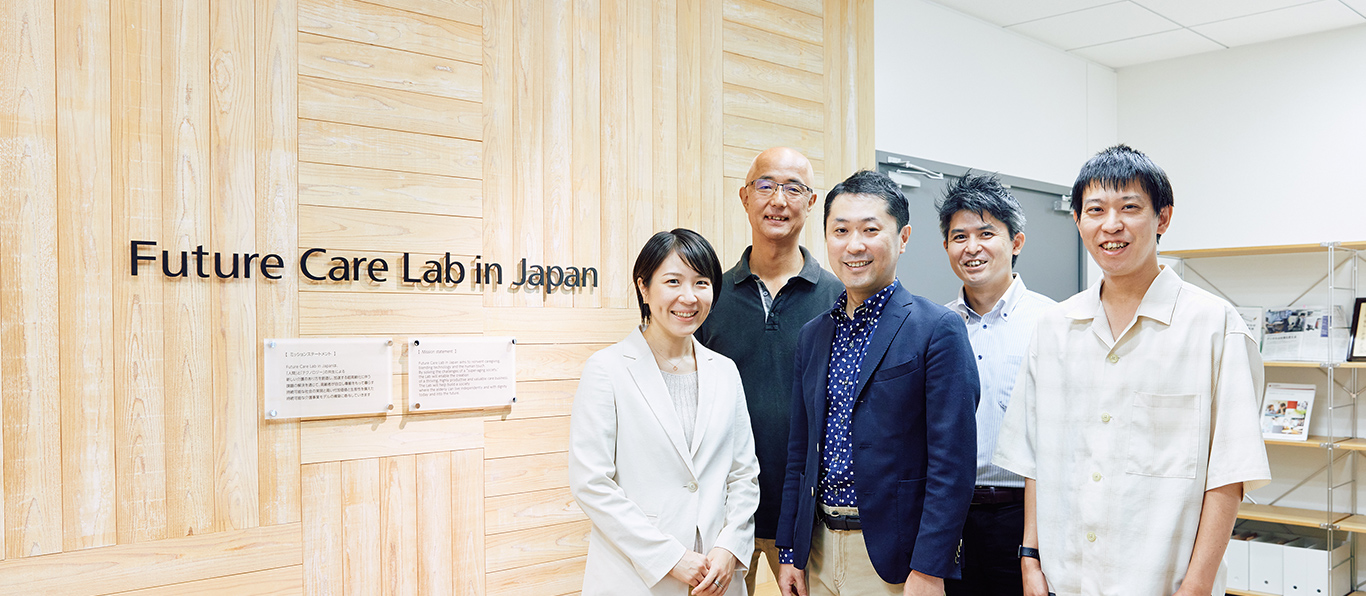
OTHER CASE